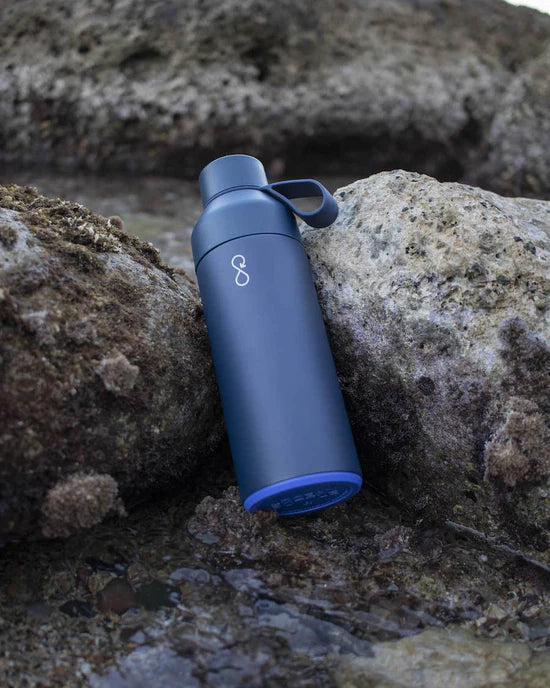Making the Ocean Bottle
What’s it like to make a truly sustainable product in 2019?
One of our core pillars at our company is to be uncompromising, both in terms of the products we make and our positive effect on the environment. From the outset of our development this has defined the Ocean Bottle, its design and how we wanted to produce it. The truth. It’s not as easy as you might think and if you produce something, there will always be a footprint… the question is how do you reduce this and make your product as net positive as possible?
Below find a run through of our sustainable design process and further down for one of the obstacles we hit along the way!
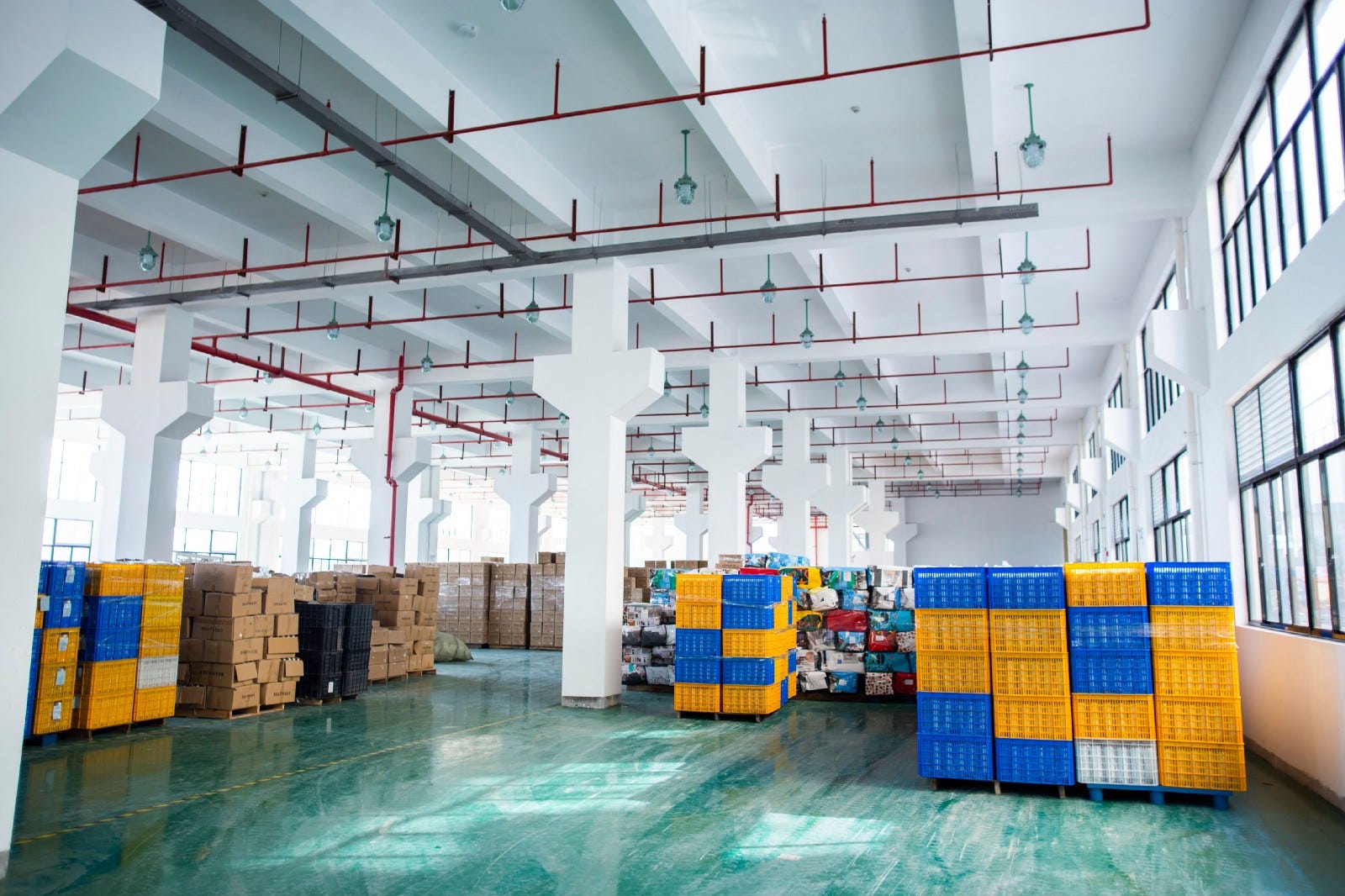
1. Cradle To Cradle
The Ocean Bottle has been designed using a cradle to cradle approach, which means it is fully recyclable at the end of its life. No parts are made from composite materials, thereby everything can be taken apart and turned back into another bottle, a mast for a sailing boat or the backing of a solar panel. It also makes it easier to supply replacement parts and repair/recycle anything which might be broken.
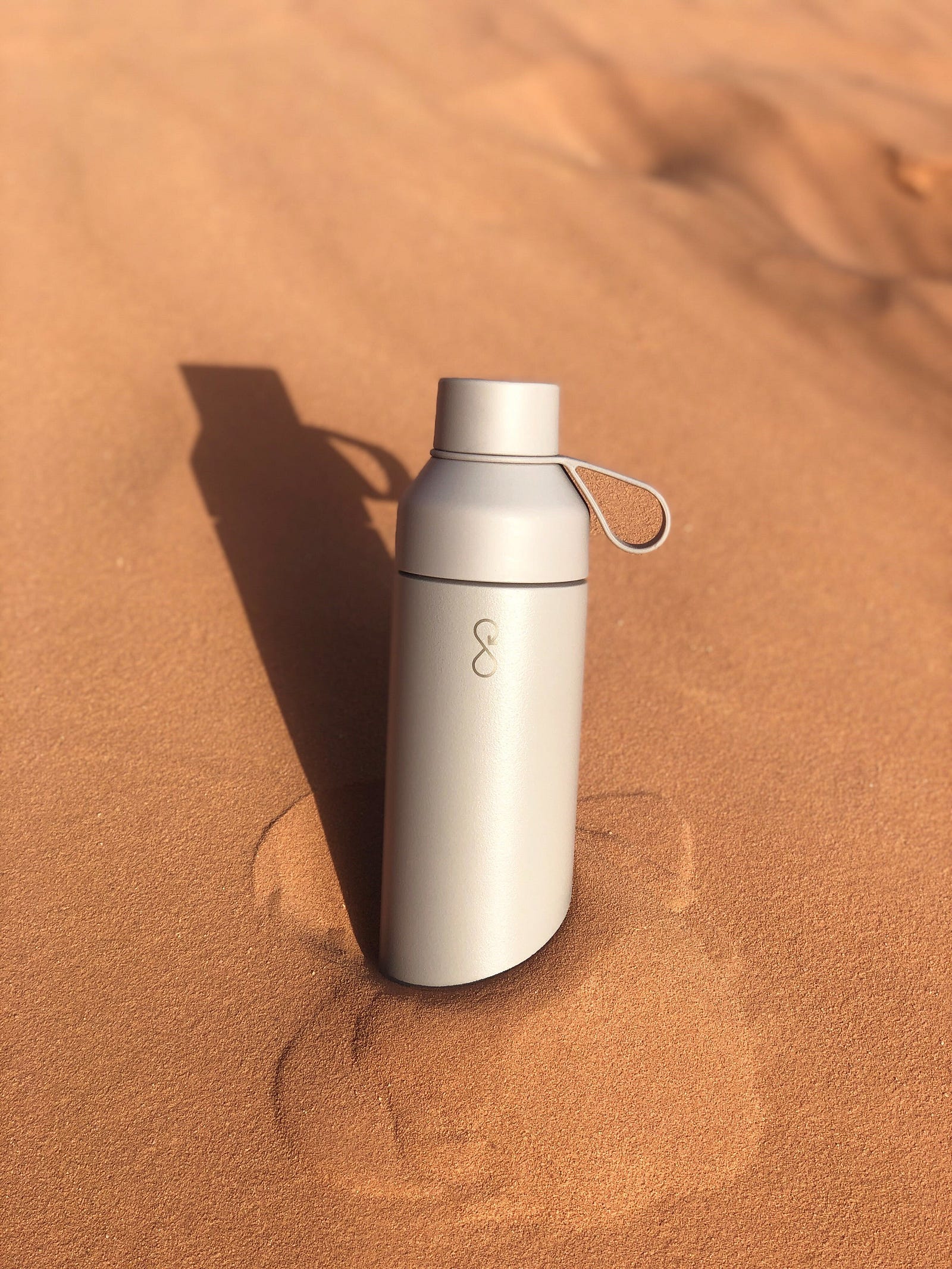
2. Materials
If you are working to solve the ocean plastic crisis, you need to make sure your product is equipped to support this mission. When we evaluated materials with our design partners K8, we looked at what is required from them (function, durability and aesthetic), and balanced this with footprint at production, during use and end of life. We wanted the product to have the broadest usability possible so that people could use it for all kinds of beverages and pass on single use plastic, which meant it needed to be insulated for hot and cold. For us stainless steel as a main component was therefore an obvious choice. It has the right functions, the material is abundant and commonly used in kitchenware and bottles. Plus, it’s a material built to last a lifetime, if looked after. Another key consideration was that although it would be cool to have a bottle fully made from upcycled ocean plastic from the Philippines we wouldn’t want to put it in contact with beverages, as it isn’t food grade. Best save it for furniture, houses and other products!
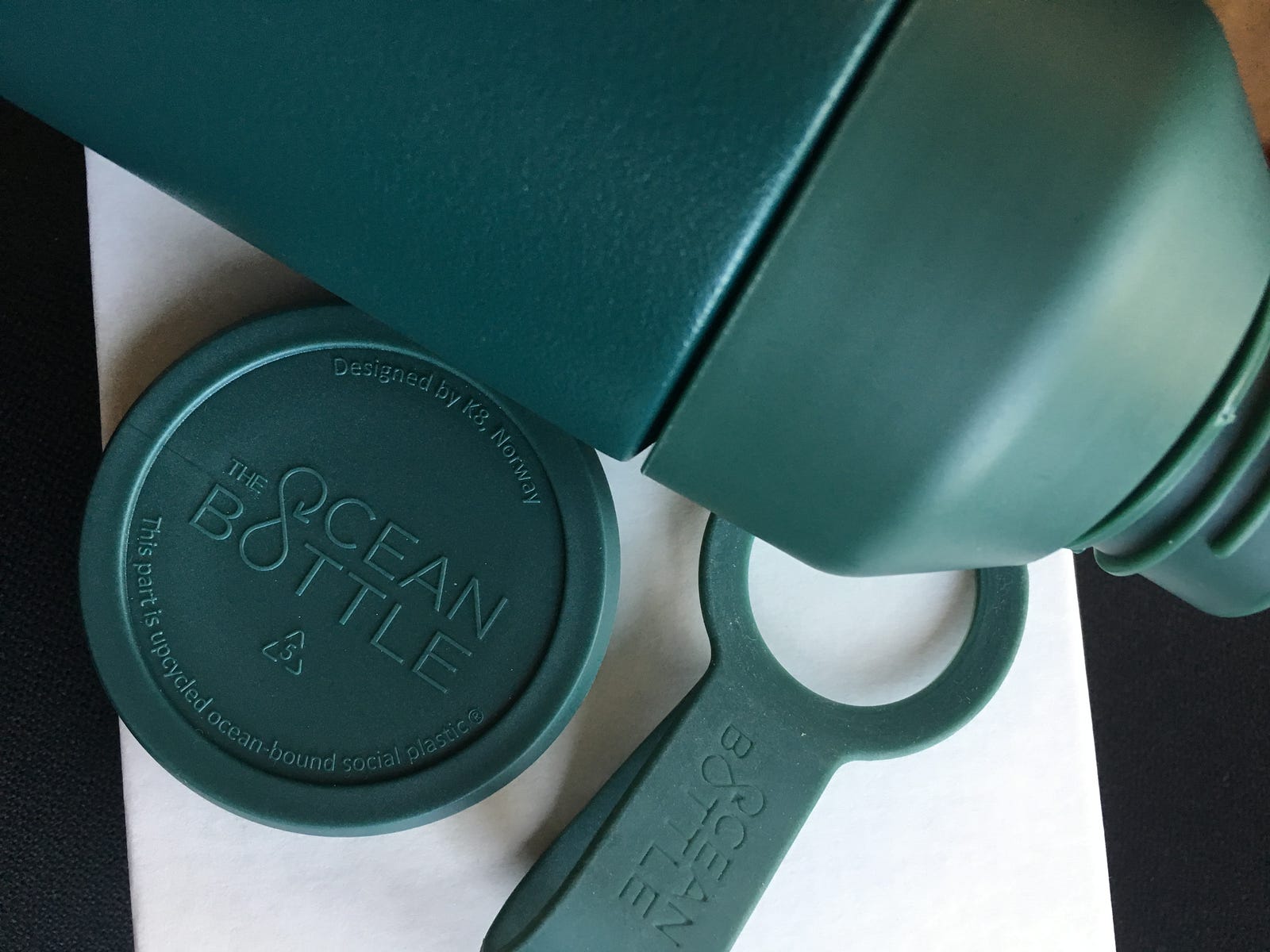
Finally the lid had to be made from a different material to the stainless steel flask in order to make it seal properly, be lightweight and cradle to cradle certified (stainless steel would require a plastic thread on the inside like most other bottles that can’t be recycled). This meant we needed a material similar to plastic, but different — and spent over 400 hours evaluating everything from bamboo, to hemp, to bioplastic to wood fibres. And shock horror, we landed on food grade plastic! The good news is that you can make 50,000 ocean bottles from just one pallet — and this is enough to offset consumption of 7.5 million plastic bottles annually and also directly fund collection of 50 million ocean bound ones. This raised an important point for us. Although we wanted to do something different to the status quo, plastic isn’t always bad, quite the opposite it has miraculous unrivalled properties. What is important is that we always take into account its after life, eradicate single use plastic and always seek better alternatives. We are still looking and will continue to search, for new innovative materials that make our products as sustainable and state of the art as possible.
3. Manufacturing
“Made in China” conjures up a lot of stigma. But, we can tell you that if you want to make a high end reusable bottle, you have to make it in China. There is no other place in the world that has the manufacturing capabilities and what many people don’t realise, is that policy there is moving faster there than elsewhere in the world — the adoption of EVs, deployment of solar and environmental production regulations is happening very quickly. There is still however a long way to go in securing a green future of production. This means you have to pick the right partner and make sure that they reach all of your benchmarks and beyond. When selecting ours, we suggested it could be smart to put solar panels on the roof in December and they installed a full solar system in April. If that’s not progress and action we don’t know what is. Designers and buyers must put pressure on production sites, to create the change they want to see. Our partner is also now applying for Green Factory certificates and BCorp which will make it one of only 4 in the world to have this certification.
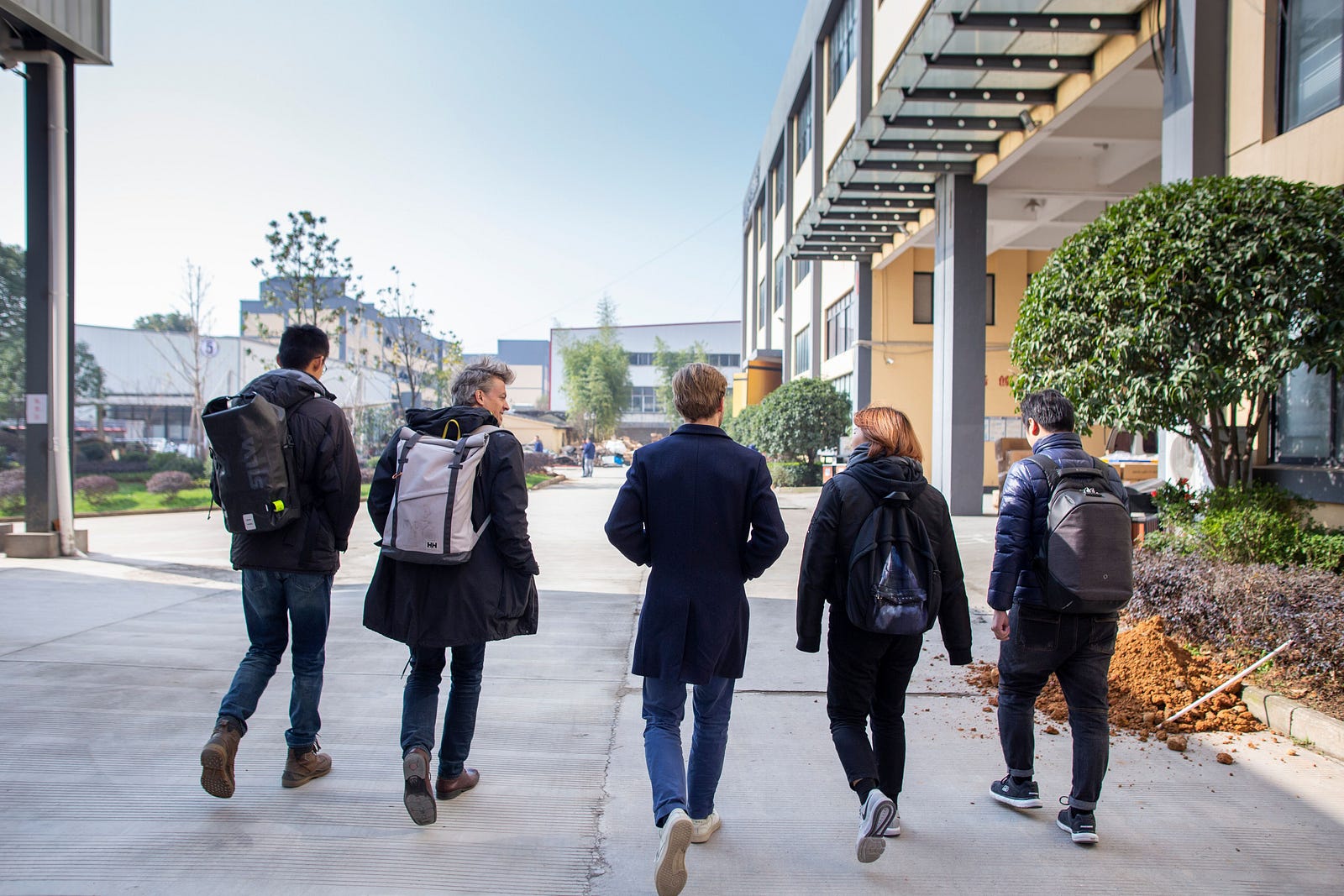
What went wrong? A lot more than we bargained for
Being the Ocean Bottle, we were hellbent on making the lid from an innovative material that wasn’t just food grade plastic and set a new benchmark for materials. We had chosen a new biomaterial after several hundred hours of research, at 6x the cost of recyclable plastic because we wanted to pioneer this. But on closer inspection it turned out that this material would eventually biodegrade in the dishwasher and we were creating a bottle for life after all — so didn’t want our community to be left with half an Ocean Bottle after just a few months use! Several options unfolded and we contacted the world’s largest plastic producer, who claimed to be producing a new innovative bio material, which was certified 99% renewable *based on the mass balance equation. What is the mass balance equation you might ask? Let us tell you. It means approximately 0.001% renewable bioplastic is fed into a pipe with 99.999% fossil fuel plastic and then certified as 99% renewable…… This is, the status quo that we are dealing with unfortunately. Companies that are finding loopholes to class their current practices as sustainable. There are now products out there on the market that are “renewable”, but it turns out that they aren’t.
The reality is that materials and production are complex, and we still do not have complete life cycle analysis on most of the things we consume. This means that bio-based might not always be better, because of other impacts that are not taken into account. A plastic bag for instance has a lower carbon footprint than using a cotton tote, but as soon as it ends up in the ocean — was the reduction in carbon worth it? So how can consumers really know what they’re buying? We’re still working it all out to be honest, but what we definitely need going forwards is ever more transparency through the value chain, so you know exactly what you have in your hand and what it took to make it.
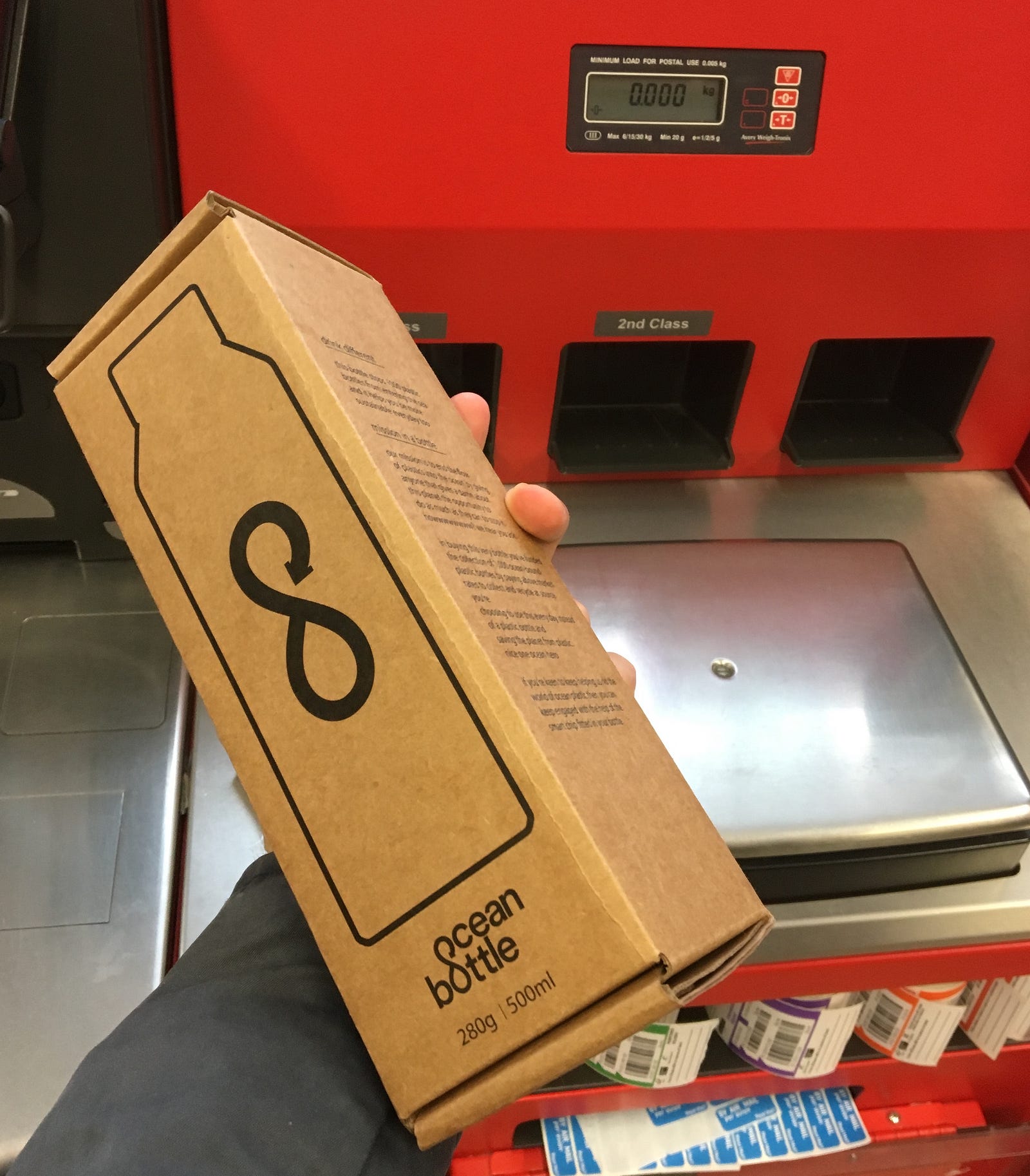
Demand more
So if you’re a person that makes stuff, firstly make sure it is necessary and secondly make sure you ask the right questions and demand change if there is something you don’t like! Let’s keep fighting the good fight, questioning everything we buy, asking for transparency and pushing the big, sometimes bad guys to join our side of the table.
Message in a bottle brought to you by Will



